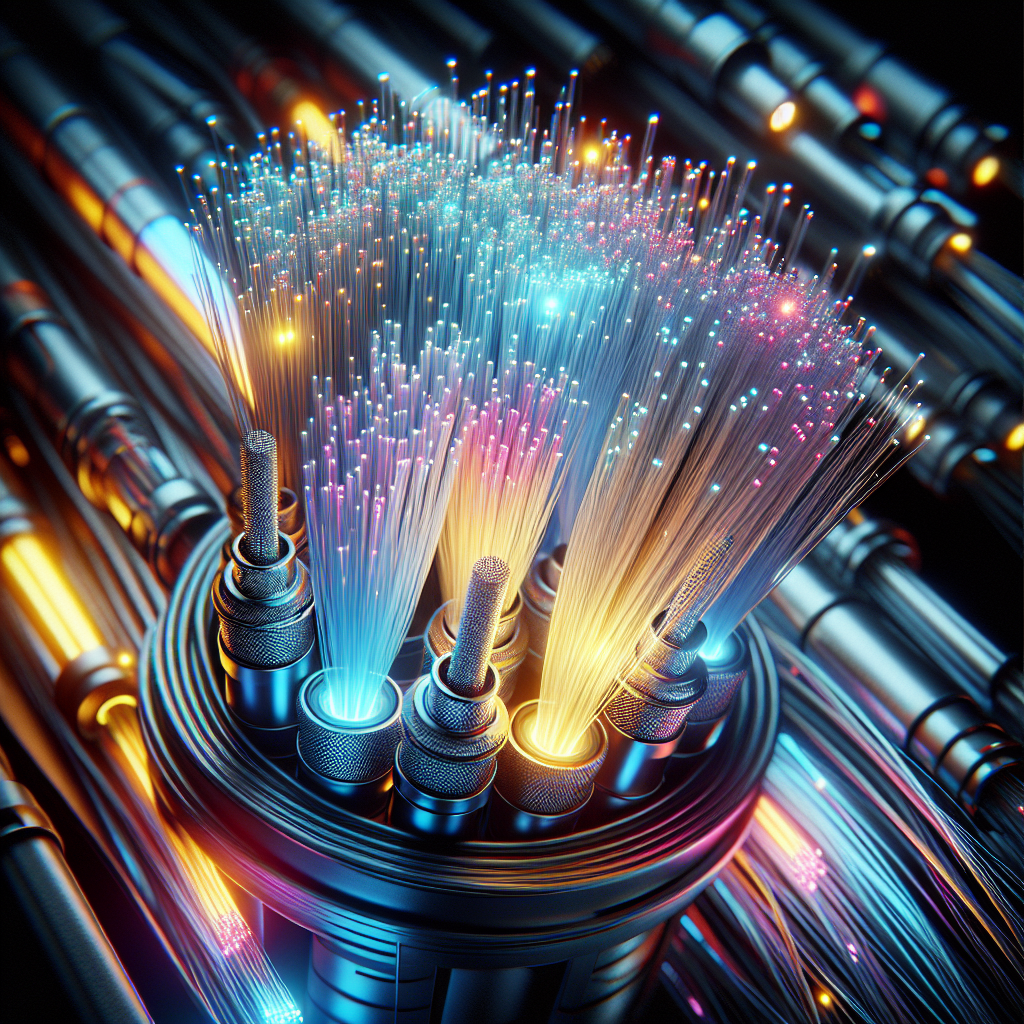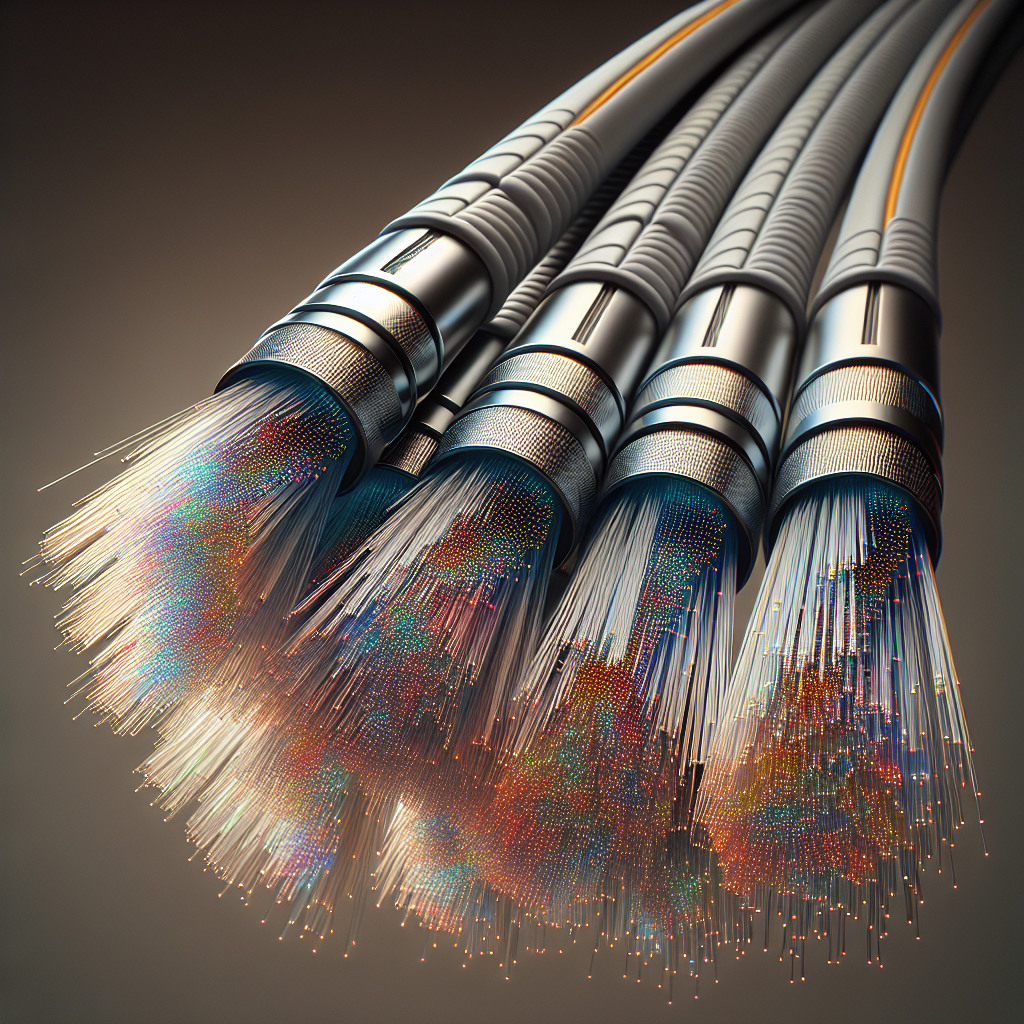Fiber optic cables are revolutionizing the way we transmit data across vast distances. Unlike traditional copper wires, fiber optic cables use light to carry information, allowing for faster and more efficient data transfer. These cables are essential in modern telecommunications, internet services, and even in medical imaging technologies. The core advantage of fiber optics is their ability to handle enormous amounts of data at incredible speeds, making them indispensable in our increasingly digital world.
At Rapid Voice Data Solutions, we specialize in providing top-notch infrastructure wiring and equipment installation to ensure your business or residence benefits from the best possible connectivity. Visit our website to learn more and get started today! Click here.
Core Material and Structure
The core of a fiber optic cable is its most critical component, responsible for carrying light signals with minimal loss. Typically made from ultra-pure glass or plastic, the core’s primary function is to guide light through the cable. The purity of the core material is essential because any impurities can scatter the light, leading to data loss and reduced transmission efficiency.
The structure of the core is designed to optimize the passage of light. For glass fibers, the core is often composed of silica with high refractive index, which helps keep the light confined within the core. In contrast, plastic optical fibers, which are generally used for shorter distances, employ a core made from polymethyl methacrylate (PMMA) or other polymers. The diameter of the core can vary depending on the application, but common sizes include 9 micrometers for single-mode fibers and 50 or 62.5 micrometers for multi-mode fibers.
The core is surrounded by the cladding, which has a lower refractive index to reflect the light back into the core, enabling efficient light transmission over long distances. This precise engineering ensures that fiber optic cables can deliver high-speed data with minimal signal degradation.
Cladding and Its Importance
The cladding is a crucial component of a fiber optic cable, playing a significant role in ensuring efficient light transmission. Positioned directly around the core, the cladding is made from a material with a lower refractive index than the core. This difference in refractive indices creates a phenomenon known as total internal reflection, which keeps the light signals confined within the core as they travel down the length of the cable.
Typically, the cladding is also made from ultra-pure glass or plastic, similar to the core. For glass optical fibers, the cladding is usually composed of doped silica, while for plastic optical fibers, it is often made from fluorinated polymers. The cladding’s ability to reflect light back into the core is essential for maintaining the integrity and speed of data transmission, as it minimizes signal loss and dispersion.
The cladding is not only vital for light propagation but also provides an additional layer of protection for the core. By acting as a barrier, it helps safeguard the core from physical damage and environmental factors such as moisture and chemicals, which can degrade the fiber’s performance over time.
The effectiveness of the cladding in containing the light within the core directly impacts the cable’s overall performance. Therefore, the material and quality of the cladding are meticulously controlled during manufacturing to ensure optimal transmission capabilities and durability.
Protective Coating Layers
Beyond the core and cladding, fiber optic cables are enveloped in multiple protective coating layers, each serving a distinct purpose. These layers are crucial for the cable’s durability and performance, especially in harsh environments.
The innermost layer, known as the primary coating, is typically made from acrylate or similar polymer materials. This layer is applied immediately after the cladding and serves to protect the delicate core and cladding from physical damage, such as microbending and macrobending, which can affect signal integrity.
Outside the primary coating is the secondary coating, which provides additional mechanical protection. Often made from tougher materials like polyethylene or polyvinyl chloride (PVC), this layer shields the fiber from environmental hazards, including moisture, chemicals, and abrasions. The secondary coating also helps to buffer the fiber against temperature fluctuations, which can cause expansion and contraction, potentially leading to signal loss.
In many cases, fiber optic cables also include strength members, such as aramid yarn (e.g., Kevlar) or fiberglass rods, nestled within or around the secondary coating. These strength members are designed to take on mechanical stresses, such as tension and compression, thereby preventing the core and cladding from being damaged during installation and use.
Finally, the outermost layer is the cable jacket, which provides the first line of defense against external physical damage. The jacket is typically made from robust materials like PVC, polyethylene, or thermoplastic polyurethane (TPU). It is designed to withstand harsh conditions, including UV radiation, extreme temperatures, and mechanical impacts.
Overall, the combination of these protective coating layers ensures that fiber optic cables remain reliable and efficient, even in the most demanding environments.
Types of Fiber Optic Cables
There is a wide variety of fiber optic cables available, each designed to meet specific needs and applications. Understanding the different types can help you choose the right cable for your project.
Single-Mode Fiber (SMF): Single-mode fiber cables feature a small core, usually around 9 micrometers, which allows only one mode of light to propagate. This design minimizes signal attenuation and dispersion, making SMF ideal for long-distance communication, such as in telecommunications and internet backbones. They are often used in scenarios where high bandwidth over extensive distances is required.
Multi-Mode Fiber (MMF): Multi-mode fiber cables have a larger core, typically 50 or 62.5 micrometers, allowing multiple modes of light to propagate. This type of fiber is suitable for shorter distances, such as within a building or campus. MMF cables are commonly used in local area networks (LANs) and data centers due to their cost-effectiveness and ease of installation.
Loose-Tube Fiber: This type of cable is designed for outdoor applications. The fibers are housed in a loose-tube structure that is filled with a gel or water-blocking material to protect against moisture. Loose-tube cables are highly durable and can withstand harsh environmental conditions, making them ideal for underground or aerial installations.
Tight-Buffered Fiber: Used primarily for indoor applications, tight-buffered fiber cables have each fiber individually coated with a buffer coating, providing additional protection. These cables are flexible and easy to handle, making them suitable for use in building backbone installations and in environments where the cable might be exposed to physical stress.
Armored Fiber: Armored fiber optic cables feature an additional protective layer, usually made of metal, which provides extra protection against physical damage. These are used in environments where the cables might be exposed to mechanical stress or potential vandalism, such as in industrial settings or outdoor installations.
By understanding the various types of fiber optic cables, you can make an informed decision that ensures optimal performance and longevity for your specific application.
Applications of Fiber Optic Cables
Fiber optic cables have revolutionized various industries due to their high-speed data transmission capabilities and reliability. These cables are now integral to numerous applications, demonstrating their versatility and efficiency.
Telecommunications: One of the most prominent applications of fiber optic cables is in telecommunications. They are used to transmit data over long distances with minimal loss and interference. This makes them ideal for internet services, telephone networks, and cable television, ensuring high-speed data transfer and clear communication.
Medical Field: In the medical industry, fiber optic cables are utilized in endoscopy, where they help in transmitting light to and from the inside of the human body. This enables doctors to view internal organs with minimal invasion. Additionally, they are used in advanced imaging techniques and in the development of medical instruments that require precise and reliable data transmission.
Military and Aerospace: The military and aerospace sectors benefit from the high bandwidth and secure communication offered by fiber optic cables. They are used in various applications, including secure communication lines, data transmission in aircraft, and missile guidance systems. The resistance to electromagnetic interference makes them particularly valuable in these fields.
Industrial Applications: Fiber optic cables are also widely used in industrial settings for monitoring and controlling machinery. They provide reliable communication between devices and systems, enhancing automation and efficiency. Their ability to withstand harsh conditions makes them suitable for use in manufacturing plants, refineries, and other industrial environments.
Broadcasting: The broadcasting industry relies on fiber optic cables for transmitting high-definition video signals over long distances. This ensures high-quality video and audio transmission with minimal delay, making them essential for live broadcasts and streaming services.
These are just a few examples of the many applications of fiber optic cables. Their ability to provide fast, secure, and reliable data transmission makes them indispensable in various fields.
Visit our website to learn more and get started today! Click here.





